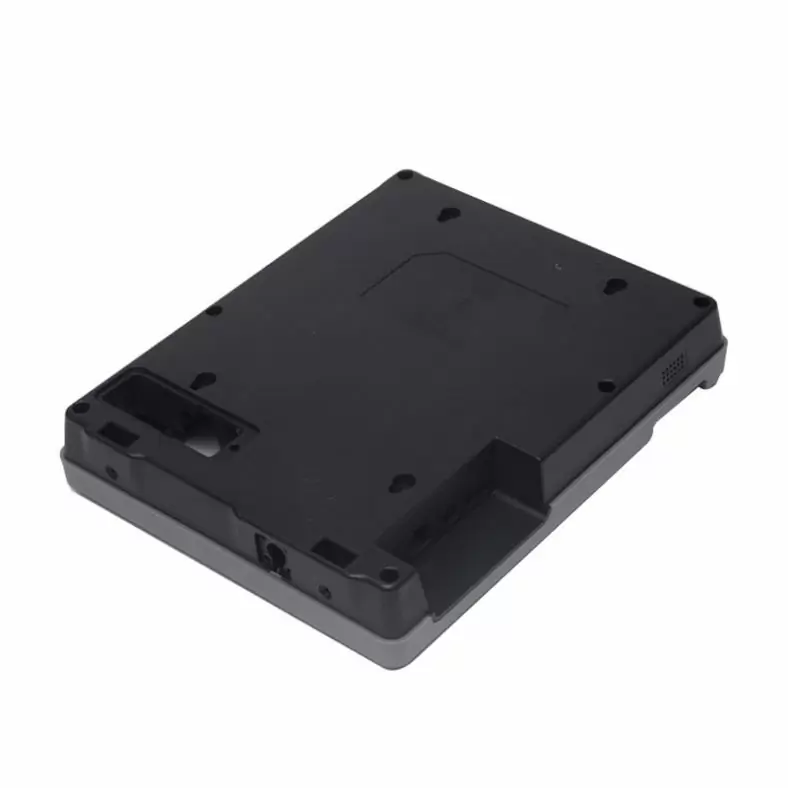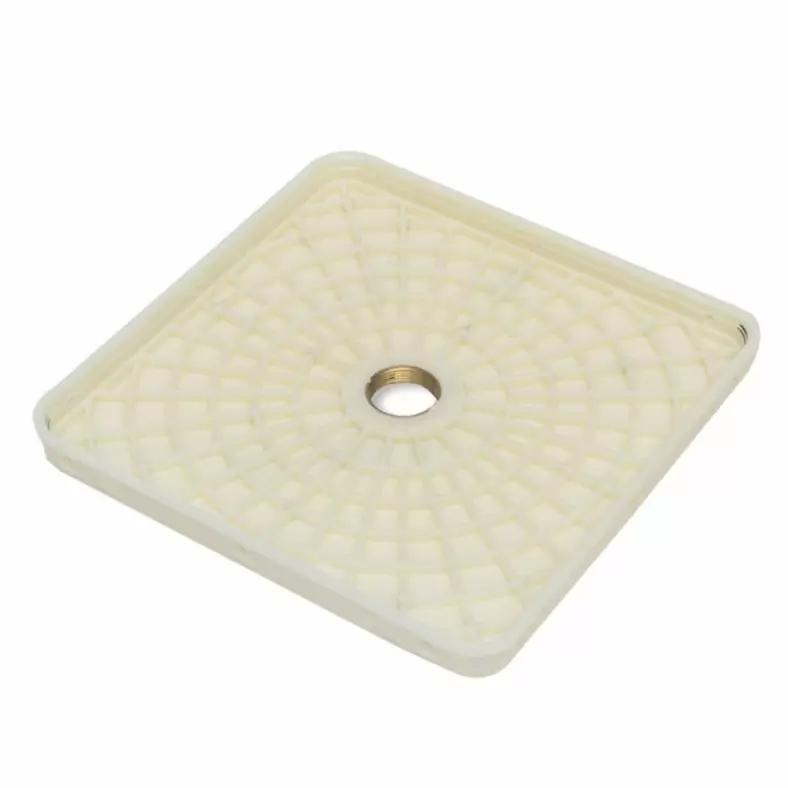Overmolding has emerged as a groundbreaking manufacturing process that enables the combination of multiple materials to create a single, integrated part. This technique, also known as two-shot molding or multi-material injection molding, offers numerous advantages in terms of product performance, functionality, and aesthetics. Overmolding finds applications in various industries, including automotive, consumer electronics, medical devices, and more. In this comprehensive guide, we will delve into the intricacies of overmolding part design, exploring its benefits, design considerations, process steps, material selection, and real-world applications.
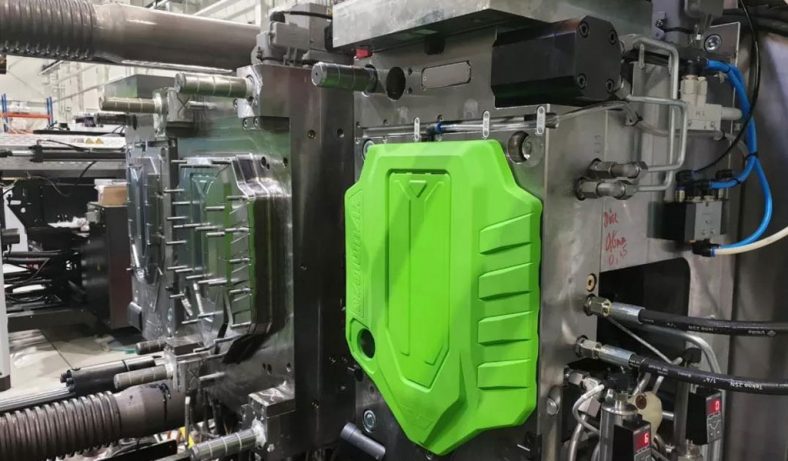
Understanding Overmolding
Overmolding is a specialized injection molding process that involves the molding of one material (the substrate) over another material (the overmold) to create a composite part. This unique manufacturing approach brings together the best characteristics of two or more materials, resulting in a product with enhanced properties and functionality. The substrate, typically made of a rigid or semi-rigid material, acts as the core structure, while the overmold, generally a soft and flexible material, covers and bonds to the substrate during the molding process.
Advantages of Overmolding Part Design
Overmolding offers a plethora of advantages that make it a highly attractive manufacturing technique:
Enhanced Product Performance
One of the key benefits of overmolding is the ability to combine materials with complementary properties. By selecting materials with different hardness levels, thermal characteristics, or chemical resistance, designers can create parts with improved performance and durability. For example, a hard plastic substrate combined with a soft elastomeric overmold can yield a grip-enhanced handle for tools or consumer electronics, enhancing ergonomics and user comfort while maintaining structural integrity.
Improved Sealing and Water Resistance
Overmolding allows for the creation of sealed parts with excellent water resistance. The overmolded material forms a protective barrier against water, dust, and other environmental factors, making it ideal for outdoor applications, electronic devices, and medical equipment.
Cost Savings
Overmolding can lead to substantial cost savings in various ways. First, it enables the integration of multiple functions into a single part, reducing the need for separate components and assembly processes. Additionally, overmolding allows the use of lower-cost materials for the substrate while still achieving the desired functionality through the overmold material.
Aesthetic Appeal and Customization
Overmolding facilitates the combination of different colors and textures, offering exciting design possibilities. Manufacturers can create visually appealing products that stand out in the market. Moreover, overmolding enables the inclusion of logos, branding, or other custom designs directly onto the part, enhancing brand identity.
Vibration Damping and Noise Reduction
Overmolding with soft materials can significantly reduce vibration and noise in mechanical components. This feature is highly desirable in automotive and industrial applications where noise and vibration control are critical for the comfort and safety of users.
Enhanced Ergonomics and Comfort
Overmolding enables the creation of contoured and soft-touch surfaces, enhancing ergonomics and user comfort. This is particularly valuable for handheld devices, tools, and appliances where user experience is a priority.
Design Considerations for Overmolding
While overmolding offers numerous advantages, successful implementation requires careful consideration of several factors during the part design phase:
Material Compatibility
Choosing compatible materials is paramount for achieving a strong bond between the substrate and the overmold. Material compatibility includes factors such as adhesion properties, thermal expansion rates, and melt temperatures. Testing and validation of material combinations are necessary to ensure the longevity and performance of the overmolded part.
Wall Thickness and Feature Design
Balancing the wall thickness of the substrate and overmold is crucial to avoid issues like sink marks, warping, or delamination. Thin substrate walls might not provide enough strength for proper overmolding, while thick walls can lead to uneven distribution of the overmold material. Proper feature design, such as ribs and gussets, can help enhance the structural integrity of the part.
Draft Angles and Undercuts
Draft angles are essential for smooth ejection of the part from the mold. Designers must ensure that the overmold material flows easily over the substrate and that there are no undercuts that could trap the part in the mold. Adequate draft angles also reduce the risk of overmold flashing and improve the overall aesthetics of the finished part.
Overmolded Part Size and Complexity
The size and complexity of the overmolded part influence the selection of the molding machine and the tooling required for the process. Larger and more intricate parts might require specialized machinery and tool design considerations to ensure successful overmolding.
Surface Preparation
Proper surface preparation is crucial for achieving strong adhesion between the substrate and overmold. Surface treatments like chemical etching or plasma treatments can improve bonding characteristics and lead to more reliable overmolded parts.
Design for Manufacturability (DFM)
Applying Design for Manufacturability principles is essential in overmolding part design. Simplicity in design and considering the limitations of the manufacturing process can lead to more cost-effective and reliable production. Collaboration between designers and molders is crucial to optimize the design for efficient overmolding.
Overmolding Process Steps
The overmolding process involves several essential steps, each contributing to the successful creation of an integrated and high-quality overmolded part. Let’s explore these steps in detail:
Substrate Injection Molding
The overmolding process begins with the production of the substrate through injection molding. In this step, the substrate material is melted and injected into a mold cavity, creating the primary part shape. The substrate’s design and material properties play a crucial role as they form the foundation for the overmolding process. The substrate must be designed with consideration for the overmold material’s flow, adhesion, and compatibility.
Preparing the Mold
Once the substrate part is produced, it is placed into a second mold, specially designed to accommodate the overmold material. The substrate is carefully positioned in the mold to ensure proper alignment during the overmolding process. The mold’s design includes channels for the overmold material to flow around the substrate and venting to allow air to escape during injection. Proper mold preparation is essential to achieve uniform and defect-free overmolding.
Overmold Material Injection
With the mold prepared, the overmold material is injected into the second mold cavity, surrounding the substrate and bonding to its surface. The overmold material must flow smoothly around the substrate to create a strong bond without trapping air or causing defects. Injection parameters, such as melt temperature, injection pressure, and mold temperature, are carefully controlled to achieve optimal results. Maintaining consistent and uniform material flow is crucial for achieving the desired overmolded part geometry.
Cooling and Solidification
After the overmold material is injected, the mold is cooled to allow the materials to solidify and bond. Proper cooling is essential to prevent warping, distortion, or part shrinkage, and to achieve the desired mechanical properties. The cooling time and temperature are carefully controlled to ensure that the overmolded part maintains its structural integrity and dimensional accuracy.
Ejection and Finishing
Once the overmolded part has solidified, it is ejected from the mold. The part is carefully removed to prevent any damage or deformation. Any excess material or flash resulting from the overmolding process is trimmed or removed. The ejection process must be controlled to avoid stressing or distorting the part during removal.
Post-Processing and Assembly
Depending on the specific application, the overmolded part may undergo additional post-processing steps to achieve its final form. Post-processing may include surface finishing, such as polishing or texturing, to enhance the part’s appearance and feel. The overmolded part may also be subjected to secondary operations, such as painting or laser marking, for branding or customization purposes.
Additionally, some overmolded parts may require assembly with other components to complete the final product. Assembly processes could involve mechanical fastening, adhesives, or ultrasonic welding to integrate different parts into a cohesive whole.
Materials Used in Overmolding
Overmolding offers manufacturers a wide range of material options, each with unique properties that cater to specific application requirements. The selection of overmold materials plays a crucial role in achieving the desired product performance and aesthetics. Here are some of the commonly used materials in overmolding:
Thermoplastic Overmolding Materials
Thermoplastic materials are widely used in overmolding due to their versatility and ease of processing. Common thermoplastic overmold materials include:
- Polypropylene (PP): PP is known for its excellent chemical resistance and low density, making it suitable for applications requiring chemical resistance and lightweight components.
- Thermoplastic Elastomers (TPEs): TPEs offer a combination of rubber-like flexibility and the processability of thermoplastics. They are used in applications that require soft-touch surfaces, such as grips and handles.
- Polyamide (Nylon): Nylon provides good mechanical properties, including high tensile strength and impact resistance, making it suitable for structural components in overmolded parts.
- Polycarbonate (PC): PC offers excellent transparency and high impact resistance, making it ideal for overmolding parts with transparent or translucent requirements.
5.2. Thermoset Overmolding Materials
Thermoset materials are used in applications where a higher level of rigidity and temperature resistance is required. Common thermoset overmold materials include:
- Epoxy Resins: Epoxy resins offer excellent adhesion, mechanical properties, and chemical resistance. They are often used in electronic and medical overmolding applications.
- Phenolic Resins: Phenolic resins provide excellent dimensional stability and electrical insulation properties, making them suitable for electronic and electrical overmolding applications.
- Melamine Formaldehyde (MF) Resins: MF resins offer high heat resistance and are often used in overmolding applications requiring thermal stability.
5.3. Elastomeric Overmolding Materials
Elastomers are flexible and rubber-like materials used to provide soft-touch surfaces and cushioning in overmolded parts. Common elastomeric overmold materials include:
- Silicone: Silicone offers excellent heat resistance, flexibility, and biocompatibility, making it ideal for medical and consumer electronic overmolding applications.
- Thermoplastic Elastomers (TPEs): As mentioned earlier, TPEs are used in overmolding applications that require rubber-like flexibility and soft-touch surfaces.
5.4. Specialty Materials and Applications
In addition to the commonly used materials mentioned above, there are specialty materials specifically designed for unique overmolding applications:
- Liquid Silicone Rubber (LSR): LSR is a specialized elastomeric material that is injected into molds and cured to form a durable, flexible, and high-temperature-resistant overmold. It is widely used in medical, automotive, and consumer electronics industries.
- Bio-based Polymers: Bio-based polymers, derived from renewable resources, are gaining popularity as sustainable overmold materials for eco-friendly products.
The choice of overmold materials is influenced by factors such as the intended application, performance requirements, regulatory compliance, and cost considerations. Proper material selection is critical to ensure compatibility between the substrate and overmold materials and to achieve optimal bonding and performance of the overmolded part.
Real-World Applications of Overmolding
Overmolding has found extensive use in various industries, revolutionizing product design and enhancing performance and aesthetics. Let’s explore some of the real-world applications of overmolding in different sectors:
Automotive Industry
The automotive industry is one of the major beneficiaries of overmolding technology. Overmolding has been widely adopted in the automotive sector to improve safety, comfort, and functionality of various components. Some common applications include:
- Steering Wheels: Overmolding allows for the integration of soft-touch materials on the steering wheel, enhancing driver comfort and grip.
- Gear Shift Knobs: Overmolding enables the creation of customized and aesthetically appealing gear shift knobs with improved tactile feel.
- Door Handles and Trim: Overmolded door handles and trim offer improved ergonomics and visual appeal, contributing to a premium look and feel of the vehicle’s interior.
- Sealing Components: Overmolded gaskets and seals provide excellent water and dust resistance, ensuring the longevity and performance of automotive components.
Consumer Electronics
Overmolding has become a hallmark of high-quality and innovative consumer electronic products. Manufacturers leverage overmolding to enhance the durability, functionality, and aesthetics of various devices. Some examples of consumer electronics applications include:
- Smartphone Cases: Overmolding allows for the creation of dual-material smartphone cases with shock-absorbing properties, providing added protection against drops and impacts.
- Remote Controls: Overmolded remote controls offer improved ergonomics and grip, enhancing the user experience.
- Earphones and Headphones: Overmolding enables the integration of soft materials in earphone and headphone designs, providing a comfortable fit and noise isolation.
- Fitness Trackers: Overmolding is used to create wearable fitness trackers with soft, skin-friendly materials for enhanced user comfort.
Medical Devices
The medical industry has embraced overmolding for its ability to create complex, biocompatible, and user-friendly medical devices. Overmolding in medical applications ensures better patient outcomes, ease of use, and safety. Some common medical device applications include:
- Syringe Grips: Overmolded syringe grips provide a secure and comfortable grip for medical professionals during injections.
- Medical Instrument Handles: Overmolding enhances the grip and ergonomics of surgical instruments, facilitating precise and safe handling during medical procedures.
- Hearing Aids: Overmolding is used to create custom-fit hearing aids with soft and comfortable materials, ensuring a better fit and long-term wearability.
Household Appliances
Overmolding is prevalent in household appliances to enhance functionality, safety, and user experience. From kitchen appliances to cleaning devices, overmolding offers several benefits. Common household appliance applications include:
- Coffee Machine Handles: Overmolded handles on coffee machines provide a comfortable and heat-resistant grip for users.
- Vacuum Cleaner Parts: Overmolding is used to create durable and flexible parts on vacuum cleaners, improving impact resistance and maneuverability.
- Blenders and Food Processors: Overmolded controls and grips on blenders and food processors offer better user ergonomics and control during operation.
Sports Equipment
Overmolding has found its way into sports equipment to enhance performance, comfort, and durability. Overmolded sports equipment is popular among athletes due to its improved grip and functionality. Some common sports equipment applications include:
- Bicycle Grips: Overmolded bicycle grips provide enhanced comfort and vibration damping during long rides.
- Golf Club Grips: Overmolding improves the grip of golf club handles, enhancing control and swing performance for golfers.
- Racket Handles: Overmolding is used in tennis and badminton racket handles to provide a comfortable and secure grip for players.
Aerospace and Defense
In the aerospace and defense industries, overmolding is utilized to create lightweight, robust, and functional components for aircraft, spacecraft, and military equipment. Some applications include:
- Aircraft Seals: Overmolded seals in aircraft components provide excellent water and air tightness, ensuring the integrity of critical systems.
- Military Equipment Grips: Overmolded grips on firearms and other military equipment offer improved handling and comfort for soldiers in the field.
Industrial and Manufacturing Equipment
Overmolding is also employed in the industrial and manufacturing sector to enhance the durability, ergonomics, and safety of various equipment. Some applications include:
- Tool Grips: Overmolding provides comfortable and slip-resistant grips on hand tools, improving user experience and safety.
- Machine Handles: Overmolded handles on machines offer better control and operator comfort during extended use.
Overmolding has proven to be a transformative manufacturing process that empowers industries to create products with enhanced performance and aesthetics. From the automotive industry to consumer electronics, medical devices, and beyond, overmolding has found a wide range of real-world applications, contributing to improved functionality, durability, and user experience. As technology and materials continue to advance, the possibilities for overmolding in various industries are limitless. The key to successful overmolding lies in careful material selection, meticulous design considerations, and precise control of the overmolding process to achieve the desired outcome. As businesses seek to meet the ever-evolving demands of consumers, overmolding remains a valuable tool in their pursuit of excellence in product design and manufacturing.
Case Studies: Successful Overmolding Implementations
Overmolding has been instrumental in transforming various industries by providing innovative solutions and enhancing product performance. Let’s delve into some successful case studies that highlight the application of overmolding in different products:
Overmolded Automotive Steering Wheel
- Objective: A leading automotive manufacturer aimed to improve the comfort and aesthetics of their steering wheels while ensuring a firm grip for drivers.
- Solution: The manufacturer decided to implement an overmolding process using a thermoplastic elastomer (TPE) over a rigid polypropylene (PP) substrate. The TPE material was selected for its soft-touch properties and excellent grip, while the PP provided the necessary structural rigidity.
- Result: The overmolded steering wheel not only provided a comfortable and ergonomic grip but also enhanced the overall aesthetic appeal of the car’s interior. The improved grip reduced driver fatigue and improved vehicle handling, leading to increased customer satisfaction and positive reviews.
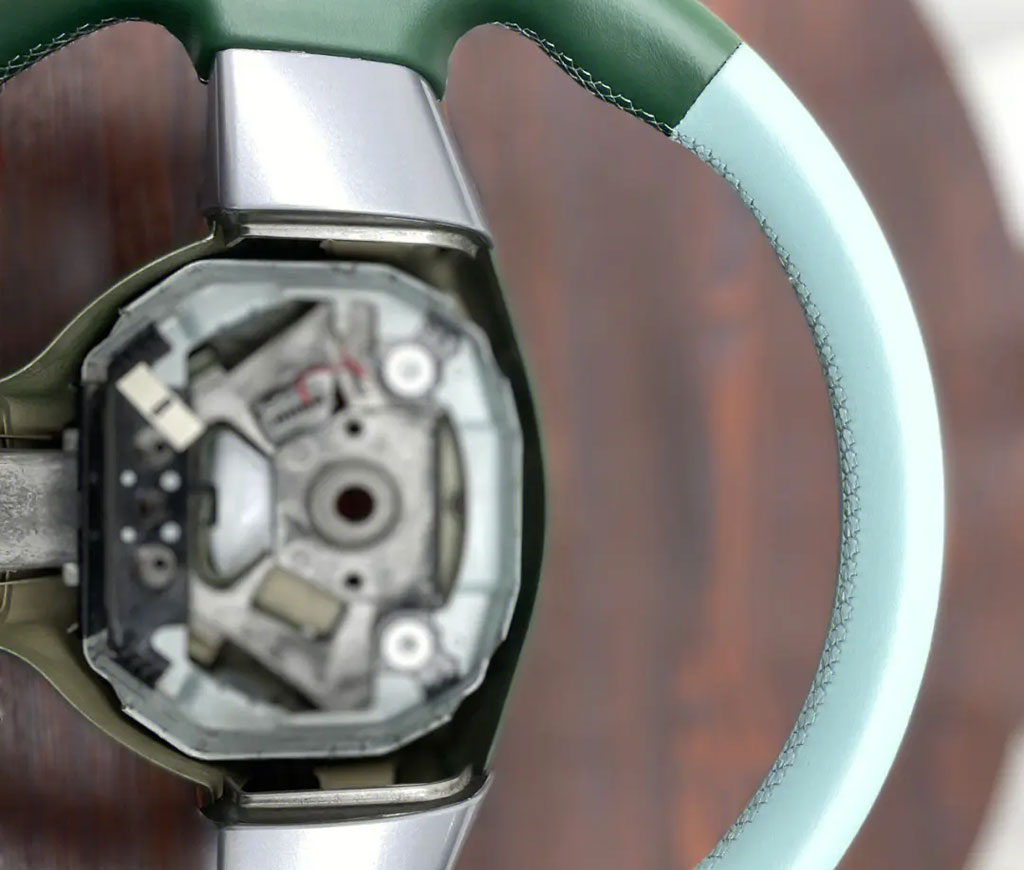
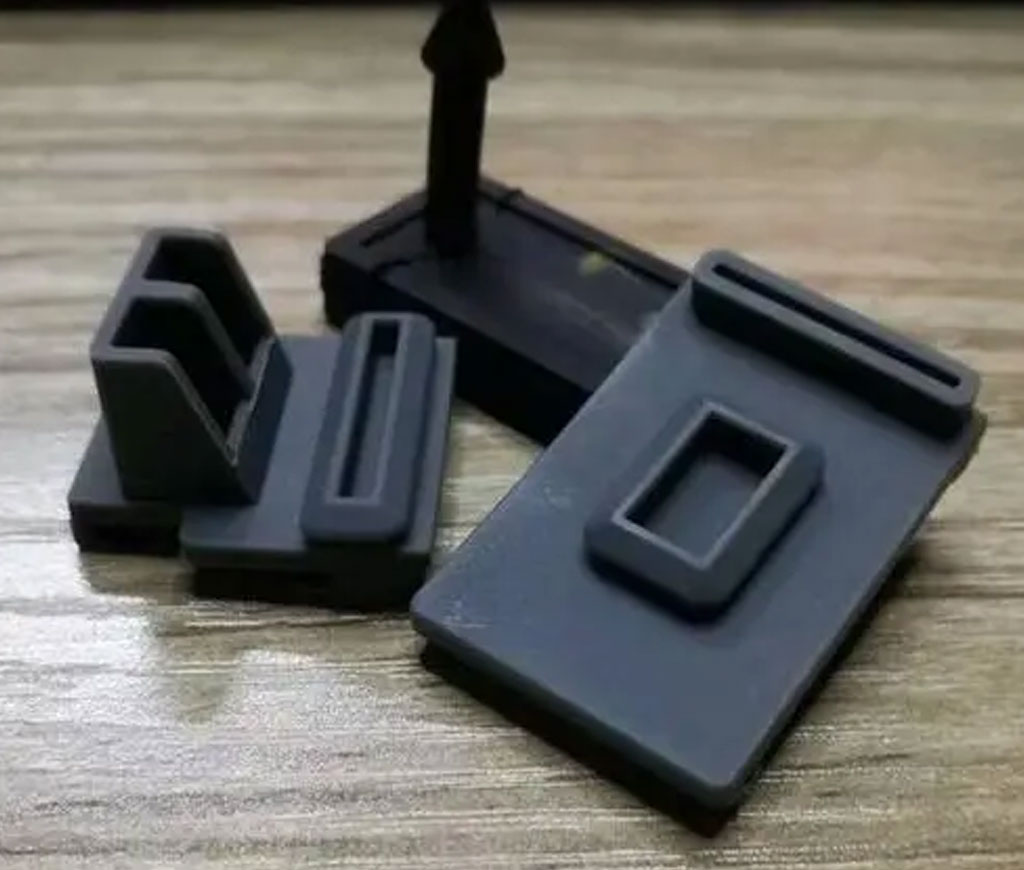
Overmolded Smartphone Case
- Objective: A mobile phone accessory manufacturer aimed to create a durable and shock-resistant smartphone case with an appealing design.
- Solution: The company adopted overmolding to create a dual-material smartphone case. They used a hard polycarbonate (PC) as the substrate for impact resistance and structural integrity, while a soft thermoplastic elastomer (TPE) was overmolded to provide shock absorption and a non-slip surface.
- Result: The overmolded smartphone case not only offered superior protection against drops and impacts but also provided a premium feel and aesthetic design. The non-slip TPE surface ensured a secure grip for users, making the case a popular choice among smartphone users seeking both style and functionality.
Overmolded Medical Device Handle
- Objective: A medical device manufacturer sought to improve the user experience and comfort of their handheld medical devices, such as ultrasound probes and electronic thermometers.
- Solution: Overmolding was employed to create a custom-designed handle for the medical devices. The manufacturer used a combination of liquid silicone rubber (LSR) as the overmold material and rigid polycarbonate (PC) as the substrate. LSR was selected for its biocompatibility, excellent grip, and ability to withstand sterilization processes.
- Result: The overmolded medical device handles provided medical professionals with a comfortable and ergonomic grip during extended use. The LSR surface enhanced the devices’ hygiene and ease of cleaning, making them suitable for use in clinical settings.
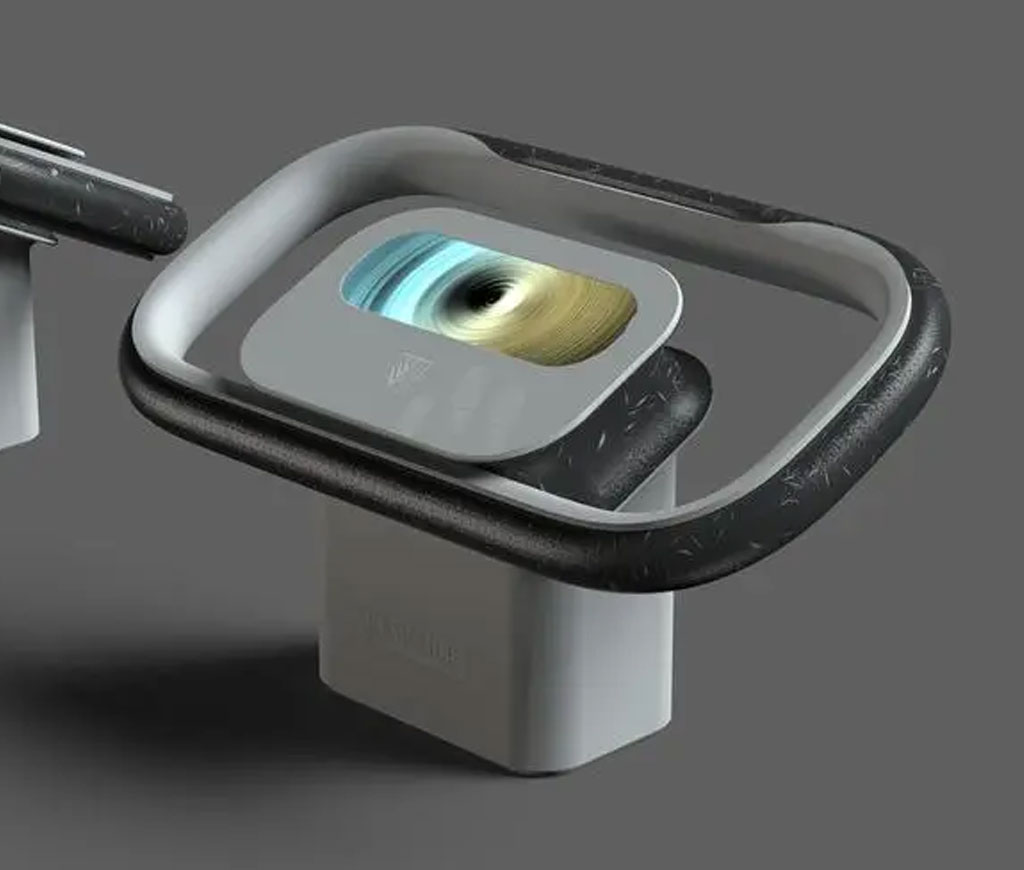
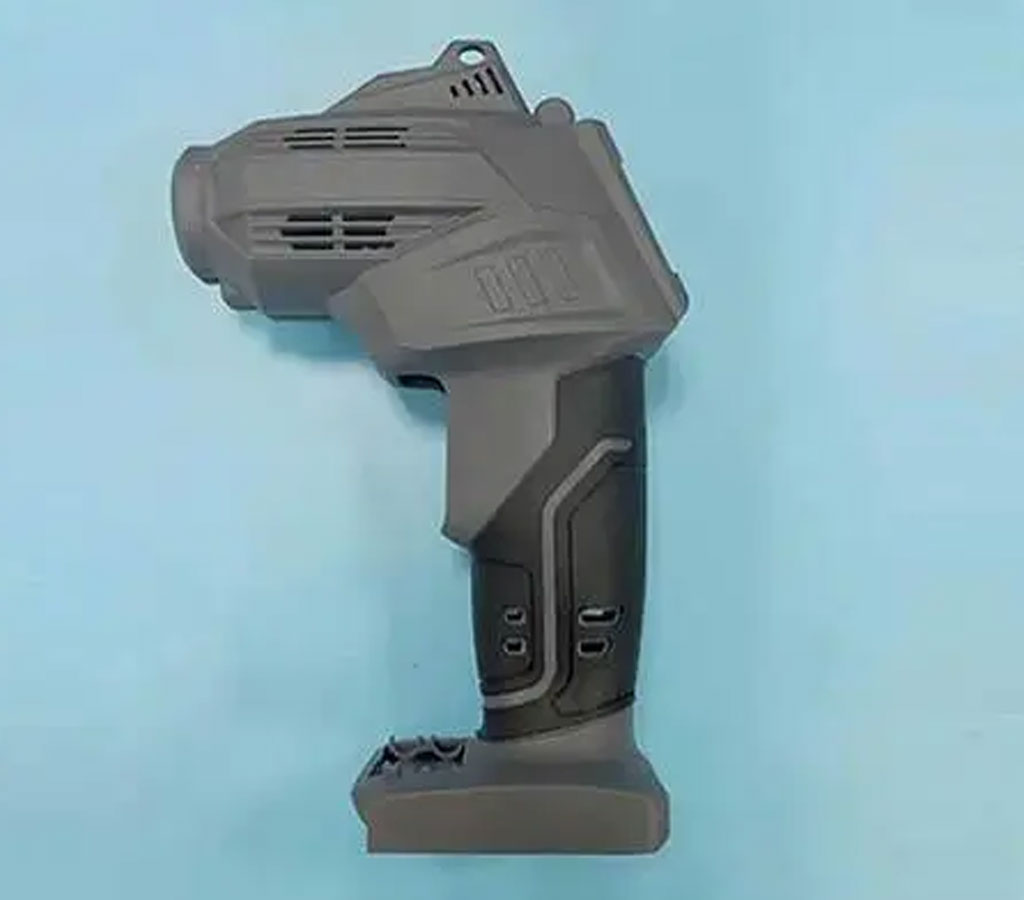
Overmolded Appliance Handle
- Objective: An appliance manufacturer sought to differentiate their products by offering a premium look and feel, along with improved durability for their refrigerator handles.
- Solution: Overmolding was employed to create a dual-material refrigerator handle using a combination of thermoplastic elastomer (TPE) as the overmold and rigid polypropylene (PP) as the substrate. The TPE material was selected for its soft-touch properties and aesthetic appeal, while the PP provided structural strength and rigidity.
- Result: The overmolded appliance handles not only improved the grip and comfort for users but also elevated the overall appearance of the appliances. The durable overmolded handles with enhanced aesthetics contributed to the brand’s image as a provider of high-quality and stylish household appliances.
Overmolded Bicycle Grip
- Objective: A bicycle manufacturer aimed to enhance rider comfort and grip during cycling, thereby improving the overall cycling experience.
- Solution: Overmolding was employed to create custom-designed bicycle grips using a combination of thermoplastic elastomer (TPE) as the overmold and rigid polypropylene (PP) as the substrate. The TPE material was selected for its excellent vibration damping and soft-touch properties, while the PP provided structural integrity.
- Result: The overmolded bicycle grips offered riders a comfortable and ergonomic grip, reducing hand fatigue and improving control during cycling. The improved grip and shock absorption properties contributed to a smoother and more enjoyable ride, making the bicycles more appealing to cycling enthusiasts.
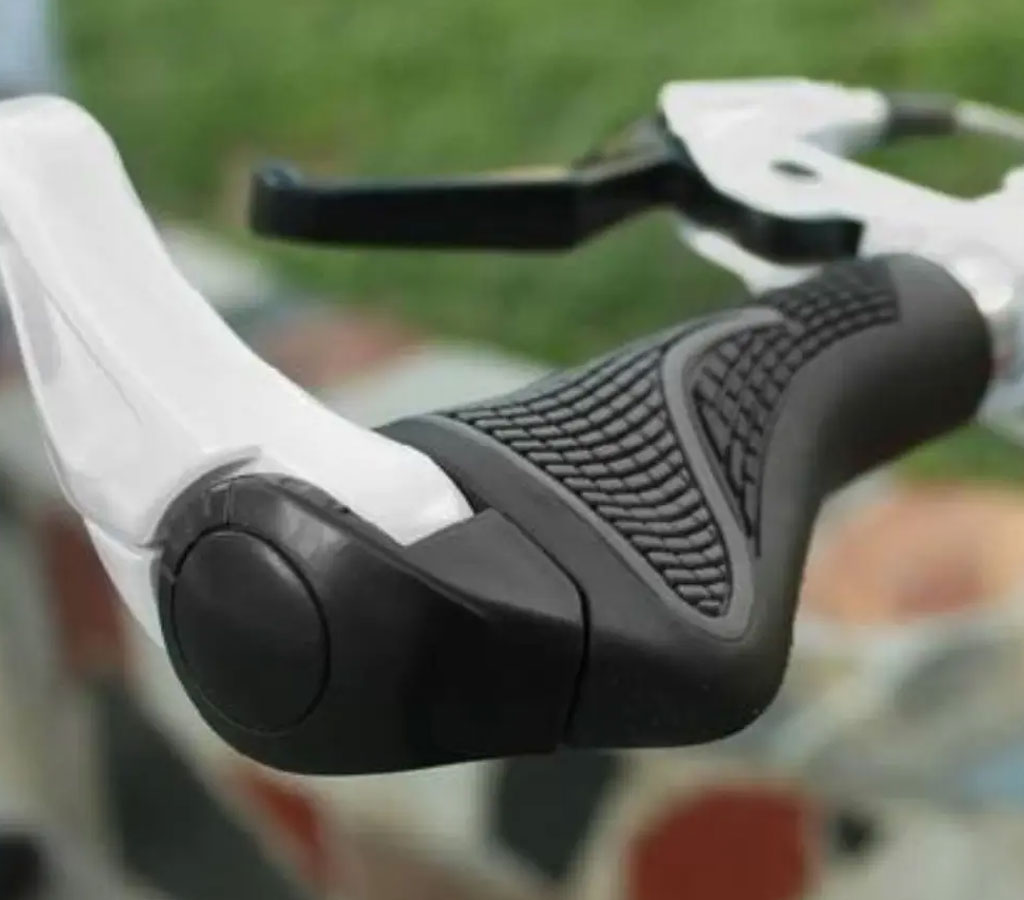
The case studies above demonstrate the versatility and effectiveness of overmolding in transforming various products across different industries. From automotive steering wheels to smartphone cases, medical device handles, appliance grips, and bicycle grips, overmolding has proven to be a valuable tool for enhancing product performance, aesthetics, and user experience. By carefully selecting the right materials, designing for optimal functionality, and leveraging the benefits of overmolding, manufacturers can create innovative and high-quality products that stand out in the market. As technology and material advancements continue, overmolding is expected to play an even more significant role in shaping the future of product design and manufacturing.
Design Guidelines for Specific Overmolding Applications
Overmolding offers a versatile solution for various product enhancements, catering to specific needs such as water resistance, vibration damping, ergonomics, comfort, branding, and customization. When designing overmolded parts for these specific applications, certain considerations and design guidelines are essential to achieve optimal results. Let’s explore the design guidelines for each of these specific overmolding applications:
Overmolding for Water-Resistant Products
Overmolding is an effective method to create water-resistant products, providing a reliable seal against moisture and environmental elements. Here are some design guidelines for overmolding water-resistant products:
- Material Selection: Choose overmold materials with excellent water resistance, such as thermoplastic elastomers (TPEs), silicone, or specialty water-resistant polymers.
- Sealing Design: Design the overmold in a way that provides a secure seal around critical areas, such as electronic components or openings. Ensure that the overmold material forms a tight bond with the substrate to prevent water ingress.
- Gasket Integration: Integrate gasket-like features into the overmold design to enhance sealing properties. These features can be designed as grooves, lips, or protrusions to create a more effective barrier against water.
- Venting and Drainage: Include venting and drainage features in the design to allow trapped air and water to escape during the overmolding process. This ensures uniform material flow and prevents the entrapment of air or moisture.
- Surface Preparation: Properly prepare the substrate surface before overmolding to ensure optimal adhesion between the overmold material and the substrate. Surface treatments or primers may be necessary, depending on the substrate material.
- Testing and Validation: Conduct rigorous testing to validate the water resistance of the overmolded part. Perform water immersion tests, pressure tests, or environmental tests to verify the effectiveness of the water-resistant design.
Overmolding for Vibration Damping
Overmolding can significantly enhance vibration damping in various products, reducing noise and vibrations during operation. Here are some design guidelines for overmolding for vibration damping:
- Material Selection: Choose overmold materials with excellent vibration damping properties, such as thermoplastic elastomers (TPEs) or other elastomeric materials.
- Design for Flexibility: Design the overmolded part with flexibility in mind. Thin, flexible overmold sections can absorb vibrations and dampen noise effectively.
- Undercuts and Ribs: Incorporate undercuts and ribs in the overmold design to create additional flexural areas, allowing the overmold material to absorb and dissipate vibrations.
- Optimized Thickness: Carefully select the thickness of the overmold to strike a balance between rigidity and flexibility. Thicker sections may offer structural support, while thinner sections provide better vibration damping.
- Material Compatibility: Ensure that the overmold material is compatible with the substrate to achieve optimal bonding and vibration transfer reduction.
- Testing and Validation: Perform vibration testing on prototypes to evaluate the effectiveness of the overmolded part in reducing vibrations and noise.
Overmolding for Ergonomics and Comfort
Overmolding can significantly improve the ergonomics and comfort of products, ensuring a user-friendly experience. Here are some design guidelines for overmolding for ergonomics and comfort:
- Soft-Touch Materials: Select soft-touch overmold materials, such as thermoplastic elastomers (TPEs) or silicone, to provide a comfortable and non-slip surface for users.
- Contoured Designs: Design the overmold to have contoured shapes and textured surfaces that fit comfortably in the user’s hand. Consider human factors and ergonomics in the design process.
- Grip Enhancements: Incorporate grip-enhancing features, such as ridges, grooves, or finger grips, to improve user control and comfort.
- Customization: Use overmolding for personalized and custom-fit products, allowing users to select the grip size or shape that best suits their preferences.
- Balanced Weight Distribution: Ensure that the overmolded part’s weight distribution is balanced to reduce fatigue during extended use.
- User Testing: Conduct user testing and feedback sessions to validate the comfort and ergonomics of the overmolded product design.
Overmolding for Branding and Customization
Overmolding offers unique branding opportunities and customization options to create distinctive products. Here are some design guidelines for overmolding for branding and customization:
- Dual-Material Design: Utilize overmolding to combine different colors or textures in the product design, allowing for eye-catching and branded appearances.
- Logo Integration: Incorporate logos, brand names, or graphics into the overmold design for branding purposes.
- Surface Finishing: Utilize different surface finishing techniques, such as painting, laser engraving, or embossing, to further customize the overmolded part with brand-specific details.
- Color Consistency: Ensure color consistency between different batches of overmolded parts to maintain brand identity and recognition.
- Material Compatibility: Choose overmold materials that adhere well together to achieve crisp and sharp edges in branding elements.
- Prototyping and Validation: Create prototypes to verify the branding and customization features before full-scale production.
Designing overmolded parts for specific applications requires careful consideration of material selection, design features, and user requirements. Whether it’s achieving water resistance, enhancing vibration damping, improving ergonomics and comfort, or incorporating branding and customization elements, overmolding provides a flexible and efficient solution to meet these diverse demands. By adhering to the design guidelines specific to each application, manufacturers can create innovative and high-performance overmolded products that excel in their respective markets.
Material Selection and Chemical vs. Mechanical Bonds
Material selection is a critical aspect of overmolding, as it directly impacts the performance, aesthetics, and overall quality of the final product. Additionally, the choice between chemical bonding and mechanical bonding methods plays a significant role in achieving a strong and reliable bond between the substrate and overmold materials. Let’s delve into the importance of material selection and the differences between chemical and mechanical bonds in overmolding:
Material Selection in Overmolding
Selecting the appropriate materials for overmolding is crucial to ensure compatibility, adhesion, and overall performance of the overmolded part. The choice of materials depends on several factors, including the application, mechanical requirements, environmental conditions, and aesthetic preferences. Here are some key considerations when selecting materials for overmolding:
- Compatibility: The overmold material must be compatible with the substrate material to ensure a strong and durable bond. Materials with similar thermal expansion coefficients and melt temperatures are preferred to avoid issues during the overmolding process.
- Adhesion: The overmold material should have good adhesion properties to bond effectively with the substrate material. Surface preparation and adhesion promoters may be required to improve the bonding between materials with different chemistries.
- Mechanical Properties: Consider the mechanical properties, such as tensile strength, flexibility, and impact resistance, required for the overmolded part’s intended application.
- Environmental Resistance: Evaluate the overmold materials’ resistance to environmental factors, such as temperature, humidity, chemicals, and UV radiation, based on the application’s requirements.
- Cost: Material costs can vary significantly, and selecting materials that strike a balance between performance and cost is essential for cost-effective manufacturing.
- Aesthetics: Overmolding offers the opportunity to combine different colors and textures to achieve desired aesthetics and branding elements.
Some commonly used overmold materials include thermoplastic elastomers (TPEs), silicone, polypropylene (PP), polycarbonate (PC), and liquid silicone rubber (LSR), among others.
Chemical vs. Mechanical Bonds in Overmolding
Overmolding can be accomplished using two primary bonding methods: chemical bonding and mechanical bonding. Each method has its advantages and is selected based on the materials and application requirements.
Chemical Bonding:
Description: Chemical bonding involves using an adhesive or bonding agent to create a molecular bond between the overmold material and the substrate material. The adhesive chemically interacts with the surfaces of both materials to create a strong bond.
Advantages:
Provides a strong and permanent bond.
Suitable for overmolding materials with different chemistries.
Offers a consistent bond with minimal risk of delamination.
Considerations:
The choice of adhesive must be compatible with both materials.
Surface preparation and the application of adhesion promoters may be required to enhance bonding.
Mechanical Bonding:
Description: Mechanical bonding relies on the interlocking of the overmold material with the substrate material through mechanical features, such as undercuts, ribs, or surface textures.
Advantages:
No additional adhesives or bonding agents are required.
Offers cost savings as no adhesive materials are needed.
Can provide good bond strength for certain material combinations.
Considerations:
Mechanical bonding may not be suitable for all material combinations.
The design of mechanical features is critical to ensure a reliable bond.
Selecting the Bonding Method
The selection of the bonding method in overmolding depends on various factors, including material compatibility, application requirements, production volume, and cost considerations.
- Chemical Bonding: Chemical bonding is preferred when overmolding materials with different chemistries, where traditional mechanical interlocking is not sufficient. It provides a strong and permanent bond, making it suitable for critical applications such as medical devices and automotive components.
- Mechanical Bonding: Mechanical bonding is often used when overmolding materials with compatible chemistries and when the design allows for effective mechanical interlocking. It can be a cost-effective solution for high-volume production of simple overmolded parts.
In some cases, manufacturers may use a combination of both chemical and mechanical bonding techniques to achieve the desired bond strength and product performance.
The table below contains some examples of specific brands of TPEs, including TPC, TPV, and TPU materials. The letter C indicates that the overmolding bonds are chemical and the letter M indicates when the bonds are mechanical. Chemical and mechanical bonding are not mutually exclusive, however, and can complement each other.
| Overmold Material | ABS | PC | PP |
|---|---|---|---|
| TPE – Versaflex | C | C | C |
| TPC – Hytrel | C | C | M |
| TPV – Santoprene | M | M | C |
| TPU – Texin | C | C | M |
Material selection is a crucial aspect of overmolding, impacting the overmolded part’s performance, adhesion, and aesthetics. Compatibility between materials and adhesion properties are vital considerations during material selection. Additionally, manufacturers can choose between chemical bonding and mechanical bonding methods based on the materials and application requirements. The decision between the two bonding methods ultimately influences the strength and durability of the bond between the substrate and overmold materials. By carefully considering these factors, manufacturers can produce high-quality overmolded parts that meet customer expectations and industry standards.
Testing and Validation of Overmolded Parts
Testing and validation are critical stages in the overmolding process to ensure that the final product meets the desired performance, quality, and safety standards. Various types of testing are conducted to assess the mechanical properties, environmental resistance, adhesion and bonding strength, and overall quality of overmolded parts. Let’s explore each testing category in detail:
Mechanical Testing
Mechanical testing evaluates the structural integrity and mechanical properties of overmolded parts. The following are some common mechanical tests conducted on overmolded parts:
- Tensile Strength Test: This test measures the maximum tensile load that a material can withstand before failure. It is essential to verify that the bond between the substrate and overmold materials is strong and can withstand typical usage conditions.
- Flexural Strength Test: The flexural strength test determines the material’s resistance to bending. This test assesses the overmolded part’s rigidity and ability to maintain its shape under load.
- Impact Resistance Test: The impact resistance test evaluates how well the overmolded part can withstand sudden impacts or drops. It is particularly important for applications that require high durability, such as automotive and consumer electronics.
- Compression Test: The compression test assesses the material’s ability to withstand compressive forces. This test is crucial for applications where the overmolded part may be subjected to crushing or compression during use.
- Fatigue Test: The fatigue test evaluates the material’s resistance to repeated loading and unloading cycles. It is particularly important for overmolded parts subjected to cyclic or vibrational stresses.
- Hardness Test: The hardness test measures the material’s resistance to indentation. It is essential to ensure that the overmolded part’s hardness aligns with the intended application’s requirements.
Environmental Testing
Environmental testing assesses the overmolded part’s performance under various environmental conditions to ensure its suitability for specific applications. Some common environmental tests include:
- Temperature Resistance Test: This test evaluates how well the overmolded part performs under extreme temperature conditions, such as high heat or freezing temperatures.
- Humidity and Moisture Resistance Test: The humidity and moisture resistance test assesses the overmolded part’s ability to withstand exposure to high humidity and moisture, ensuring long-term durability.
- Chemical Resistance Test: This test evaluates the overmolded part’s resistance to various chemicals, such as oils, solvents, and cleaning agents. It is crucial for applications where the part may come into contact with different substances.
- UV Resistance Test: The UV resistance test assesses the overmolded part’s ability to resist degradation and color fading when exposed to ultraviolet (UV) radiation from sunlight.
Adhesion and Bonding Testing
Adhesion and bonding testing are vital to ensure the strength and integrity of the bond between the substrate and overmold materials. Some common adhesion and bonding tests include:
- Peel Test: The peel test evaluates the strength of the bond between the substrate and overmold material by measuring the force required to peel them apart.
- Shear Test: The shear test assesses the resistance of the bond to sliding forces. It measures the force required to shear the overmold material away from the substrate.
- Cross-Cut Adhesion Test: In the cross-cut adhesion test, a series of cuts are made in the overmolded part’s surface, and an adhesive tape is applied and removed. The test evaluates the adhesion quality by examining the amount of coating removed by the tape.
Quality Control and Inspection
Quality control and inspection are essential steps throughout the overmolding process to detect any defects or deviations from design specifications. Some quality control and inspection techniques include:
- Visual Inspection: Visual inspection is a basic method to identify surface defects, such as air bubbles, voids, flash, or uneven surfaces.
- Dimensional Inspection: Dimensional inspection verifies that the overmolded part’s dimensions match the design specifications. Coordinate measuring machines (CMM) and other measurement tools are used for precise dimensional analysis.
- X-Ray Inspection: X-ray inspection is employed for overmolded parts with complex geometries or hidden internal structures to ensure there are no voids or defects.
- Ultrasonic Testing: Ultrasonic testing is used to detect defects, such as internal voids or delamination, in overmolded parts.
- Destructive Testing: In some cases, destructive testing may be necessary to assess the overmolded part’s structural integrity under extreme conditions or to validate the quality of the bond.
The table below shows the surface energy in dynes/cm for some common injection molding materials. These values are typical and may vary with specific formulations, depending on additives and fillers.Keep in mind that these values are approximate and can vary based on the specific formulation and processing conditions. Surface energy is measured in dynes per centimeter (dynes/cm).
| Material | Surface Energy (dynes/cm) |
|---|---|
| ABS (Acrylonitrile Butadiene Styrene) | 40 – 44 |
| Polycarbonate (PC) | 38 – 46 |
| Polypropylene (PP) | 29 – 34 |
| Polyethylene (PE) | 31 – 35 |
| Polyvinyl Chloride (PVC) | 40 – 46 |
| Nylon | 42 – 58 |
| Thermoplastic Polyurethane (TPU) | 42 – 48 |
| Polystyrene (PS) | 32 – 40 |
| Polyethylene Terephthalate (PET) | 44 – 46 |
| Acetal (Polyoxymethylene – POM) | 35 – 40 |
Testing and validation are crucial aspects of the overmolding process to ensure the overmolded parts meet the desired performance, durability, and safety requirements. Mechanical testing evaluates the structural integrity and mechanical properties of the part, while environmental testing assesses its performance under various environmental conditions. Adhesion and bonding testing ensure the strength of the bond between the substrate and overmold materials. Quality control and inspection techniques are used throughout the process to detect defects and maintain consistent quality. By rigorously testing and validating overmolded parts, manufacturers can produce high-quality and reliable products that meet customer expectations and industry standards.
Sourcing Simplified – Start Your Next Project With Be-Cu
For all your injection molding needs,Be-Cu has you covered. Our injection molding experts are well-versed in overmolding and can help dial in your designs to get great results. We produce custom mechanical parts in a variety of materials and we simplify part sourcing with intelligent, streamlined, automated workflows.Be-Cu is your operating system for custom manufacturing that makes part procurement faster, easier, and more efficient.



